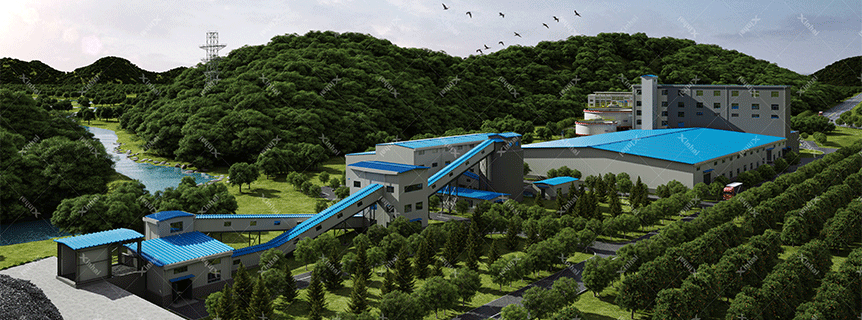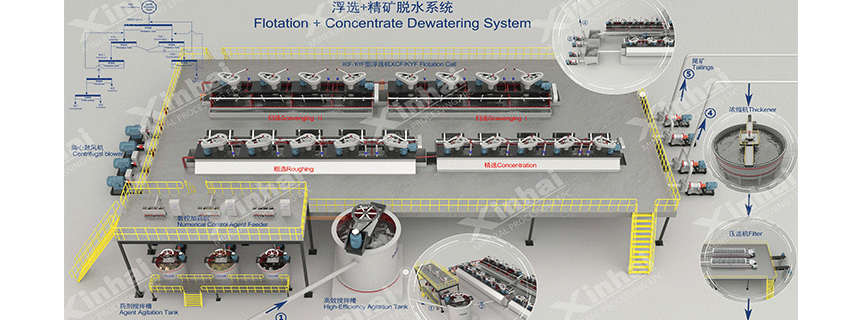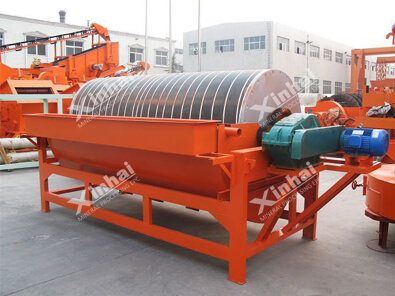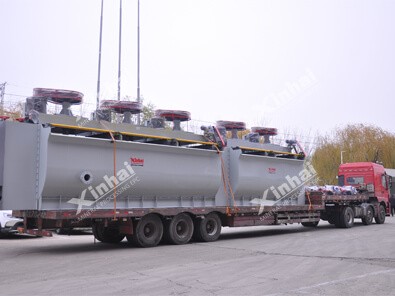What is the Cost of Antimony Processing Plant?
 Sheena
Sheena
 Nov 16, 2024
Nov 16, 2024
 2830
2830
If you want to know more details about equipment, solutions, etc, please click the button below for free consultation, or leave your requirements!

Antimony-Processing-Plant
Antimony has a variety of applications in industries such as electronics, chemicals, and metallurgy, which makes its processing highly valuable. However, setting up a processing plant involves significant investment, both in infrastructure and equipment. Before, we have explained antimony extraction methods. In this article, we'll delve into the factors affecting the cost of setting up an antimony processing plant, provide a detailed cost breakdown, and explore key considerations for a successful operation.
01Key Factors Influencing Antimony Processing Plant Costs
Back
The cost of establishing an antimony processing plant depends on several factors:
A. Plant Size and Capacity
Small-scale Plants: Designed for processing 100-500 tons per day, these are relatively low-cost and suitable for regional markets.
Large-scale Plants: Capable of processing 500-1000+ tons per day, these require substantial investment but can serve global markets.
B. Location
Proximity to antimony ore mines or recycling facilities reduces transportation costs.
Accessibility to utilities like electricity, water, and transportation infrastructure can significantly affect operational costs.
C. Technology and Equipments Used
Modern technologies, such as automated systems and eco-friendly smelting processes, may have higher upfront costs but lower long-term operating expenses.
Crushers and Grinders: To reduce ore size for further processing.
Flotation Equipment: Essential for separating antimony from impurities.
Smelting Furnaces: Used for extracting antimony from its concentrate.
Refining Equipment: Refines antimony to a high purity level.
Ancillary Equipment: Includes pumps, conveyors, and storage tanks.
D. Environmental Regulations
Compliance with environmental standards, such as waste management and emission controls, often involves additional costs for permits, pollution control equipment, and ongoing monitoring.

Flotation-and-concentrate-dewatering-system
02Operating Costs
BackBeyond the initial setup, operating costs must be accounted for to maintain profitability.
A. Raw Material Costs
The price of antimony ore or concentrates depends on quality and market demand.
B. Utilities and Consumables
Electricity, water, and chemical reagents used in the flotation and refining processes, depending on the plant's scale.
C. Maintenance
Regular upkeep of equipment, replacement of worn-out parts, and system upgrades.
03Return on Investment (ROI)
BackAntimony processing plants can offer a high ROI, especially in regions where antimony ore is abundant. High-purity antimony products fetch premium prices, and the global demand for antimony in industries like flame retardants and electronics ensures steady market opportunities. A well-run plant can achieve ROI within 2-4 years, depending on scale and efficiency.
04Conclusion
BackThe cost of an antimony processing plant depends on factors like scale, location, technology, and environmental compliance. For small to medium-scale operations, costs can range from $300,000 to $1 million, while larger plants require $1 million or more. While the initial investment is significant, the strong demand for antimony products globally ensures a steady revenue stream and attractive ROI for well-managed plants.
By carefully planning your budget, choosing the right location, and employing efficient technologies, you can establish a profitable antimony processing plant that meets industry needs and supports economic growth.
 +86 183 3575 8886
+86 183 3575 8886 pinklaurabao@gmail.com
pinklaurabao@gmail.com




 Message
Message Chat Now
Chat Now




















